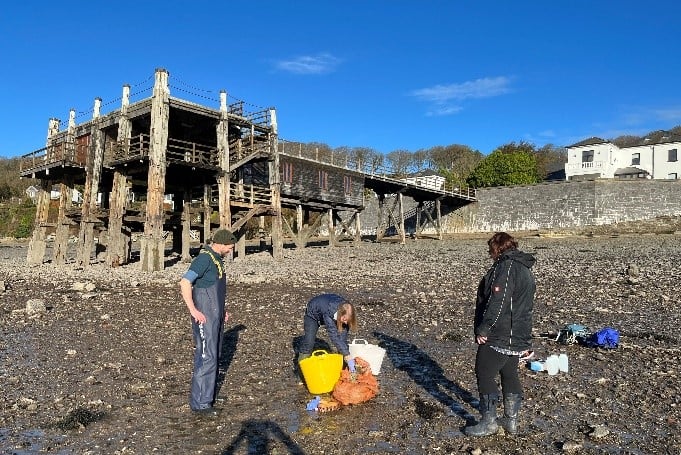An exciting new project is underway to restore the once-abundant population of native oysters within the Milford Haven Waterway.
The project will, in doing so, improve the condition of the Pembrokeshire Marine Special Area of Conservation (SAC).

Scattered populations of native oysters in the Milford Haven Waterway will receive a much-needed boost from the restoration project.
Director of Nature and Tourism at the Pembrokeshire Coast National Park Authority, James Parkin, said:
“Designated landscapes, such as the Pembrokeshire Coast National Park, account for 25 per cent of the Welsh landscape, which means they have a vital role in helping nature to recover.
“The Sustainable Landscapes, Sustainable Places Landscapes Fund is having a significant impact on our ability to create a sustainable and resilient environment for future generations.”
Since the project commenced in November 2023, Ostrea edulis broodstock have been collected from Angle Bay and Burton Ferry and transported to Bangor University, with the aim of rearing them and returning them to the Milford Haven Waterway to boost existing populations.
It is expected that up to 200,000 native oyster spat may be produced, but numbers could be significantly more.
National Park Authority Biodiversity Officer, Sarah Mellor, explained: “Native British oyster populations have declined dramatically over the decades, as a result of habitat loss, pollution, over-harvesting and disease. This has significant implications for the health of our marine environment. As well as being filter feeders that actively purify the surrounding water, oysters also store carbon, and their reefs also play an important role in fostering biodiversity by providing food, shelter, and protection for a wide variety of marine life.”
Currently, there are very few nursery facilities that can provide native oysters for restoration. To date, native oysters introduced to the Waterway have been reared in Morecambe Bay. The status of the Milford Haven Waterway as a Bonamia (parasitic disease) area also places additional restrictions on the movement of oysters.
A 2017 report commissioned by West Wales Shellfishermans Association Ltd supported by the Milford Haven Native Oyster Regeneration Management Group recommended “monitoring the prevalence of bonamia within the Milford Haven Waterway such that it can be accounted for in restoration design and adaptive management.”
There is a view that existing old native oysters may have some resistance to Bonamia. This, and the desire to protect the genetic make-up of local populations, which may also provide additional resilience, is why restoration using indigenous stock is so attractive.
Following biosecurity protocols and a brief period of quarantine, the first batch of approximately 40 oysters have commenced conditioning to spawn in their temporary nursery. The remaining oysters will be conditioned to spawn in the spring and early summer of 2024.
The work is being carried out in partnership with Bangor University, the Pembrokeshire Marine SAC Officer and Tethys Oysters in Angle Bay, and forms part of the Blue Carbon Strand of the Pembrokeshire Coast National Park Authority’s Wild Coast! Sustainable Landscapes, Sustainable Places Programme, funded by the Welsh Government and co-ordinated by Tirweddau Cymru Landscapes Wales.




